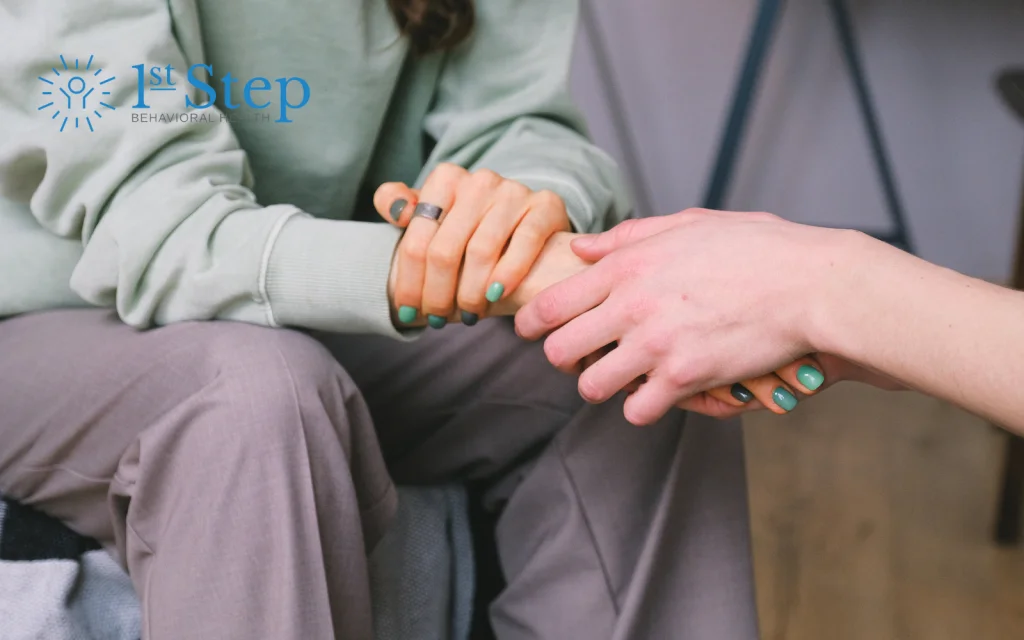Recovering from drug and alcohol addiction takes a lot of dedication, support, and time. Relying on your willpower alone is not enough to ensure lifelong sobriety. Instead, you need to explore the roots of your addiction and make a plan to stay on track in recovery.
A trigger can be anything, including people, places, or thoughts, that may cause you to experience a craving. Identifying your triggers can help you manage cravings and prevent relapse.
This article will explore some of the best ways to manage your triggers and cope with cravings. You will learn:
- What triggers are
- How to identify your own triggers
- How to use healthy coping mechanisms to deal with triggers
- Where to find treatment and support throughout the recovery process
If you struggle with addiction or you are on a recovery journey, you’ll find the support you need at First Step Behavioral Health. Contact our intake specialists now to explore our treatment programs or to find other types of recovery support.
What are Triggers?
Triggers are people, things, or situations that could cue a craving that leads to relapse. Generally, there are two types of triggers: internal triggers and external triggers.
Internal triggers are feelings or thoughts that could lead to cravings. External triggers are people, places, and other things outside of a person that could cause cravings.
You can also break down triggers into other categories. Here are some common triggers people experience in substance abuse recovery.
Social triggers
Social triggers are typically social events or situations where other people are drinking or using drugs. These might include:
- After-work happy hours
- Sporting events
- Birthday celebrations
- Weddings
- Parties
People in recovery may choose to avoid these events until they learn effective coping strategies to manage cravings.
Visual triggers
Seeing drugs, alcohol, or related items could trigger a craving. For some, the sight of an alcoholic beverage, drugs, or paraphernalia may be triggering, especially early in recovery.
Emotional triggers
Challenging emotions, such as stress, anger, anxiety, or boredom, can trigger a craving. People in recovery must seek mental health support to process these emotions and learn healthier coping mechanisms.
Psychological triggers
People in recovery may struggle with hidden psychological triggers, such as unhealthy relationships or trauma. Without developing healthy coping strategies, these underlying issues may jeopardize a person’s recovery.
Nostalgia
People may only remember the positive aspects of their substance abuse. They may think of the fun, the freedom from emotional or physical discomfort, or the social aspect of using drugs and alcohol. Nostalgia can be a serious trigger for some in recovery.
Identifying and learning about triggers is an essential step toward meaningful, lifelong addiction recovery. Many addiction treatment programs help people identify their triggers and learn practical strategies to cope with them.
5 Ways to Cope With Triggers in Recovery
Learning about your triggers can help you recognize and avoid them whenever possible. However, you cannot avoid all of your triggers, and some may seem to come out of nowhere.
It is crucial to develop healthy coping mechanisms that allow you to move past triggers without relapsing. Here are five time-tested strategies you can use when you experience a craving or trigger.
1. Know your triggers
Take time to examine your cravings and identify your triggers. Once you have an idea of what may trigger you, you can work to address them.
Think of the last time you experienced a craving. What were you doing? What thoughts or feelings were you experiencing? Where were you?
Work with a therapist or sober coach to make a list of your unique triggers. Add to it as you progress through recovery.
2. Find a support system
Learning how to cope with cravings in recovery requires support. Many people in recovery need to leave behind old, unhealthy relationships. You may need to repair old friendships or develop new relationships.
Find support in different areas of your life by joining a support group or alumni network. Attend sober events or spend time with others in recovery. Develop a good community support network by connecting with a sober coach or counselor.
3. Distract yourself
Distractions can help you “ride the wave” of a craving without relapsing. If you notice a craving coming, find something to do. Call a friend, go for a walk, play a video game, or do something else you enjoy.
Cravings are often short-lived. Finding a distraction can help you get through a craving without giving in.
4. Create boundaries
Boundaries are essential in recovery. They can keep you separate from people or situations that may threaten your recovery.
You must decide where your boundaries are and then enforce them. For example, you may decide that you can no longer spend time with anyone who is drinking, no matter what. If your friends decide to drink while you are around, you can enforce your boundaries by leaving.
Creating and enforcing boundaries can be challenging. Work with a therapist or sober coach to help you develop this essential skill.
5. Practice mindfulness
It is common for people to worry about the future or think negatively about the past. Mindfulness is the practice of focusing on the present moment. Practicing mindfulness can help you navigate triggers and other challenges as you work toward lifelong sobriety.
Many substance use disorder (SUD) treatment plans include mindfulness practice. You may practice with a coach, in a group setting, or independently. Regular practice can help you use this critical skill effectively in recovery.
Find Help Now
If you or someone in your life is living with addiction, you are not alone. Reach out to the First Step Behavioral Health specialists now to learn about our comprehensive addiction treatment and recovery support programs.

